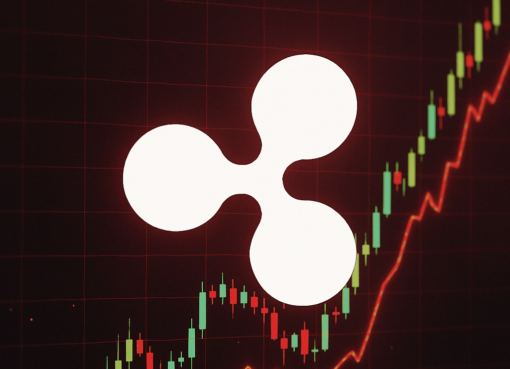CryptoX columnist Nic Carter is partner at Castle Island Ventures, a public blockchain-focused venture fund based in Cambridge, Mass. He is also the cofounder of Coin Metrics, a blockchain analytics startup.
Stablecoins are a hot commodity. Over $16 billion of them circulate in the wild today, up from $4.8 billion to start the year. Mostly these are issued outside of the U.S., and so are largely unaccountable to financial regulators. If they keep growing, U.S. policymakers, in particular those in the state of New York, will have to stomach the loss of their dominance over dollar clearing. But because stablecoins represent a powerful neutral financial infrastructure, the U.S. should welcome their ascendance regardless.
It’s no secret that banking is highly politicized, often in informal or hard to apprehend ways. The overt politicization of the N.Y.-based correspondent banking system represents a tax on all users. Embedded in each transaction is a slight risk of censorship. Dependence on the system means submitting oneself to an American aegis. The harder it is to extricate yourself, the more you are subject to the demands of the administrator.
See also: Alejandro Machado – Venezuelans Look to Crypto-Dollars for Financial Security
Banks and payment processors have also become more politicized, as they have begun to “de-risk” (read: de-platform) individuals and industry sectors with whom they disagree politically, or where they consider implied compliance costs too significant to be worth the hassle.
In February, I wrote that U.S. regulators should embrace the potential of stablecoins as continued instruments of dollar dominance. I stressed the potential welfare benefits of allowing savers in countries with inflationary regimes to engage with currency substitution without relying on the bank sector. Since February, the outstanding supply of stablecoins has grown from around $5.5 billion to $16 billion and their daily settled value has grown from about $1 billion daily to $4 billion daily. This phenomenon is no longer localized to the crypto industry. It has begun to cause geopolitical reverberations.
First, stablecoins make for an excellent tool to avoid capital controls in oppressive monetary regimes. Chainalysis has reported that tether (USDT) is extremely popular in China, even recently exceeding bitcoin’s (BTC) usage in the region. It’s important to understand that the popularity of stablecoins or “crypto-dollars” is not solely due to their digital nature but because of the transactional freedom that they offer to users.
Policymakers should be thanking their lucky stars that a putative successor to the U.S.’ financial infrastructure is a largely American phenomenon.
China’s financial system is highly digitized already. Crypto-dollars like tether offer a fundamentally different value proposition from AliPay or the state digital currency, DCEP, because they are bearer assets not subject to the same level of surveillance or transactional restrictions. Their digital nature isn’t what sets them apart; it’s the fact that you can permissionlessly accept or send any quantity of crypto-dollars with nothing more than a smartphone and trade it on a vast network of exchanges and brokers worldwide.
Today, crypto-dollarization is in full swing in places like Venezuela. Recently, Venezuelan President-in-exile Juan Guaido has begun promoting the usage of AirTM, a crypto-focused remittance company, to send U.S. dollars (USD) seized from the Maduro regime by the U.S. Treasury to health-care workers in Venezuela. Startups like Valiu are offering users digital access to the USD thanks to established crypto-financial infrastructure like LocalBitcoins. Crypto-dollars make sense because U.S. banks do not service Venezuelan users, even if regular Venezuelans are not formally sanctioned.
Crypto-dollarization works because stablecoins are, for the most part, unencumbered by the shackles of the U.S. banking system. The largest issuer, Tether, relies on a network of offshore banks, and remains frustratingly outside the purview of the New York regulator, the Department of Financial Services (despite a long campaign to bring Tether to heel). Stablecoin issuers treat the IOUs as bearer instruments, and generally do not seek to police user behavior when a transaction does not involve the issuer. Users only need a relationship with the issuer if they are redeeming or creating stablecoins with bank dollars. By granting a measure of transactional privacy and not embedding political conditions into transactions, stablecoins are the closest thing to digital cash we have today. Notably, it is the private sector, not the state, that has delivered on this promise of digitally native cash.
See also: Pascal Hügli – Hyper-Stablecoinization: From Eurodollars to Crypto-Dollars
Now, U.S. policymakers reading this might feel a profound sense of unease. New York is the center of the dollar universe. SWIFT, which the U.S. effectively controls, is unambiguously an instrument of power projection abroad. And the Federal Deposit Insurance Corp. and Department of Justice have a habit of expressing political prescriptions through informal bank guidance and veiled threats. Touch a dollar anywhere – even in a transaction in which neither counterparty is American – and you’re obliged to Uncle Sam.
But these tools are wearing blunt with overuse. The more the U.S. threatens sanctions, the greater the incentive for its peers – allies included – to seek out alternatives. The more risk-averse and puritanical banks become, the stronger the tailwinds for non-bank alternatives. The more dissidents are de-platformed from U.S. payment processors, the better neutral alternatives start to look.
Perhaps catalyzed by the growth of stablecoins, or more likely by the announcement of Facebook’s libra or China’s DCEP, various branches of the Federal Reserve are now industriously pursuing a “digital dollar.” But would such a project, regardless of its final form, grant transactors the autonomy that they deserve? Would a digital cash system produced by the Fed consist of an instant-settling, private bearer asset, as is the case with physical cash? Would an American central bank digital currency be able to credibly guarantee that its rich database wouldn’t be plundered in real time by Homeland Security, Immigration and Customs Enforcement or the Federal Bureau of Investigation, as Larry White has wondered?
Today, the U.S. is still the center of gravity as far as bitcoin and the crypto-dollar ecosystem are concerned. This is a significant advantage that should not be squandered. Policymakers should be thanking their lucky stars that a putative successor to the U.S’ financial infrastructure is a largely American phenomenon. The U.S. can continue to muddle down an increasingly exclusionary path and punish subscribers to its financial infrastructure by burdening them with political dictates, or it can embrace a neutral alternative. Self-disruption would be a significant bullet to bite, but it suits the U.S. Values like liberty, privacy, free enterprise and personal autonomy are embedded into our Constitution and social fabric. One can hardly think of a better nation to underwrite a shift to a truly neutral payments and settlement infrastructure.
See also: Nic Carter – Policymakers Shouldn’t Fear Digital Money: So Far It’s Maintaining the Dollar’s Status
While dollar infrastructure is likely to remain dominant far longer than some critics allege, it’s undeniable that banking and messaging have been deputized into carrying out the political objectives of their administrators. As relations with U.S. allies sour and China grows its sphere of influence in Asia, viable alternatives will be created. And if the DCEP is any guide, these alternatives will not encode strong privacy protections for end users. The U.S. is clearly suited to be the steward of a politically neutral payments technology, if our leaders can rise to the challenge.
If the U.S. chooses to marginalize crypto-dollars and punish their issuers, not only will they suppress a burgeoning American industry, they will also push users into even less accountable alternatives. While most stablecoins are backed by dollars in bank accounts – and are hence somewhat subject to governance – a subset are issued natively against crypto collateral like ether (ETH). These projects are more automated and lack the vectors of control and the linkages to the banking system that characterize convertible stablecoins. While still small, crypto-backed stablecoins like dai (current supply $455 million) take a more crypto-anarchist approach, and are harder to surveil or influence. More draconian regulation of crypto-dollars would not eliminate the category. Instead, it would push users into these slipperier alternatives.
The architects of these public digital dollar solutions should take a leaf from the private sector’s book. Users simply crave the qualities of cash, this time in a digital context. Far from being a dangerous techno-utopian fantasy, a genuine cash standard on the internet is simply a restoration of what was once ubiquitous and normal: transactional privacy and autonomy. These qualities are not for criminals but for everyone. And if policymakers dig in their heels, the private sector will only push back harder by providing the service that users demand – but this time outside policymakers’ sphere of influence.




